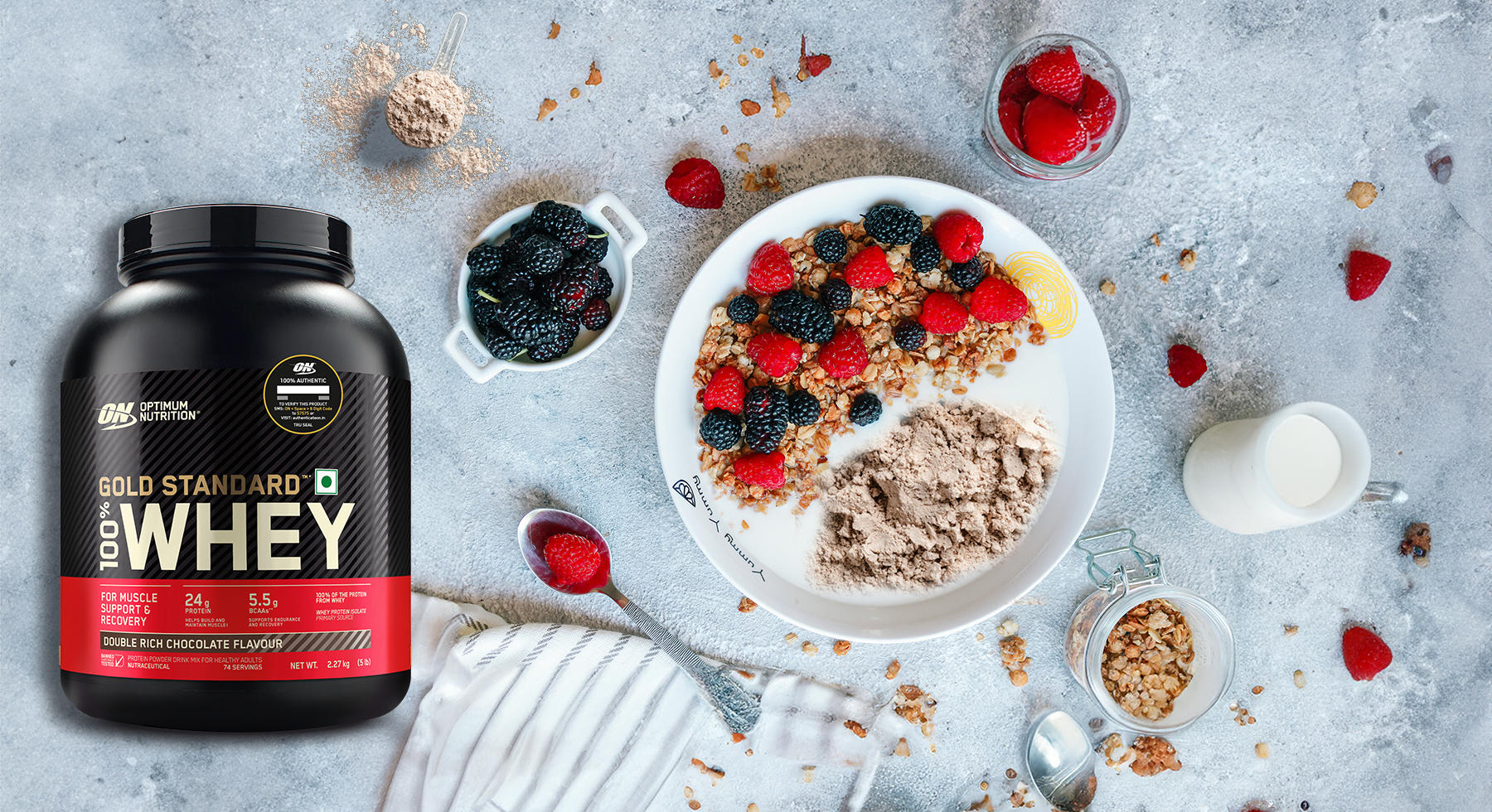 |||
5 minutes
|||
5 minutes
It’s well understood that our bodies require protein on a daily basis. However, knowing how and when to add protein can be challenging.
Learn How Much Whey Protein You Need.
How Much Whey Protein Should You Consume?
Typically for Indian adults who are sedentary, will need around 0.8 grams of protein per kilogram of body weight. This means for a healthy Indian weighing ~60kg, will need ~48 g of protein from the diet. And typically, a well-balanced lacto-vegetarian diet can and does provide this much protein in a day. However, it is when you increase your Physical Activity Level (PAL) that your protein needs will increase and depending on type of activity and/or your goal your protein needs will change. They can go as high as 2 grams per kilogram of body weight. It is in this case that a whey protein supplement can help you meet the now-increased protein requirements.
For example, if your protein requirement is 75g and you are getting around 50g of protein from food/diet, then 1 levelled scoop of Optimum Nutrition Gold Standard 100% Whey with its 24g protein per serve will help you get closer to your goal!

Note: Please know that any predictive equations/online calculators can only guide you, for personalised recommendations always consult with a registered dietitian who can help you calculate your protein needs based on your goals and can also help you devise a personalised diet plan to meet them.
How To Use Whey Protein/Ways Of Adding Whey Protein To Your Diet
Let us review three simple ways to add whey protein to you day.
Whey is considered a fast digesting and absorbing protein as compared to casein protein. The amino acids from whey protein typically peak in the bloodstream in about an hour after consumption. Therefore, whey protein can be added throughout the day when you want to deliver protein to the body fast. Below are some key opportunities to fuel your body with whey.
1. Whey with Breakfast:
Our bodies routinely fast each night while we sleep. In turn, consuming a morning meal can help you to “break the fast.” Balance out your morning routine with protein plus carbohydrates.
Start your day with a high-quality protein-rich source by adding whey protein into some of your go-to breakfast foods or everyday morning beverages. Mix whey protein into your morning coffee, matcha tea, or steamed latte. Add whey protein to batter to create breakfast favorites like pancakes, waffles, or muffins. Create a yogurt parfait, avocado toast, overnight oats or homemade granola bars.
Try our vegetarian and protein rich version of classic French toast. 1 bread slice provides-
Calories: 150
Fat: 3.5g
Carb: 18g
Protein: 11g
2. Whey As a Snack
Protein is a great snack as it can help you feel fuller and satisfied longer. Protein also plays a role in regulating appetite control and cravings by increasing satiety hormone and decreasing hunger hormone. When it comes to snacking – there is no defined set standard for timing. Snacking may vary by individual, schedule and appetite. May snack on whey protein between meals, around activities and/or before bed. Try a whey yogurt bowl by mixing whey into yogurt, then topping with fresh fruit, granola and honey. Make a smoothie by combining your favorite ingredients into blender with whey protein. Add water, milk, soy milk or almond milk. Then top off with nutrient-rich ingredients like seeds, berries, spinach, oats, nut butters and more.
Try our easy to make, high-fibre, protein rich overnight oats recipe. 1 serving provides-
Calories: 230
Fat: 6g
Carb: 24g
Protein: 21g
3. Whey Post-Workout
Muscles are made up of proteins and prolonged intense exercise can potentially disrupt those muscle protein. Intense physical activity can lead to micro-damage or mini tears in the muscle fibers, which is a normal transient response to vigorous exercise. Although muscles are especially receptive to protein hours following activity – remember that the muscle recovery process goes beyond post-workout, and it can take muscles several days to adequately recover following activity. Meaning – if you can’t get protein seconds following activity, then do not stress. Aim to take whey protein at a time that is convenient for you following activity.
Aim to consume ~20-40 grams protein to help support muscle recovery and rebuild.
Take Home Message.
It’s essential that all healthy adults consume adequate amounts of protein throughout each day to help meet protein needs and help support muscle recovery. Always approach diet with a food-first approach. If protein needs are unmet through food alone, then whey protein supplements can be utilized to help meet your protein needs. How you use whey protein is entirely up to you. The time you decide to use whey protein depends on you and your goals. Whey protein can be used first thing in the morning, between meals, around activities, with meals, before bed and much more. Find what works best for you. Here are three simple tips to help add whey protein to your daily routine –
1. Track your protein intake to ensure you’re meeting your daily needs
2. Find opportunities throughout the day where protein may be missing – including post-workout
3. Aim for 20-40 grams protein throughout the day among meals and snacks
